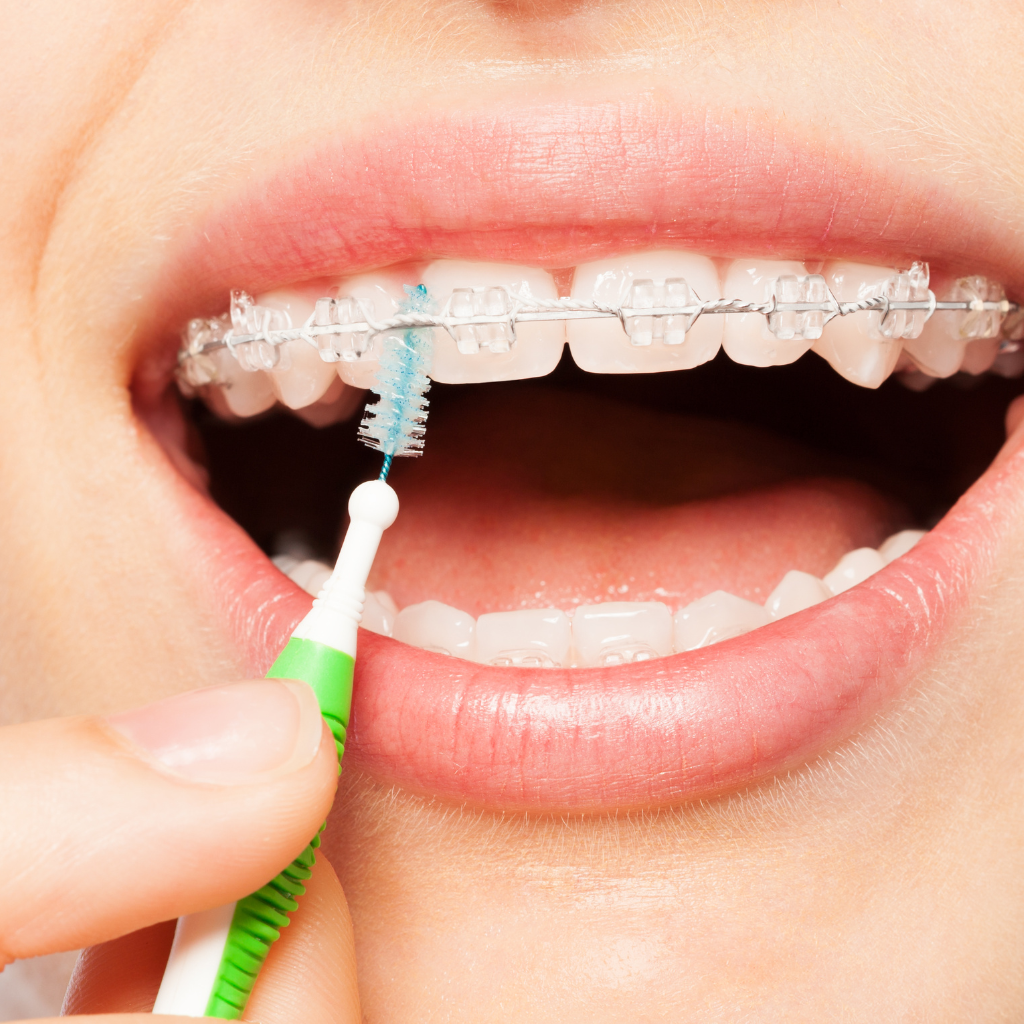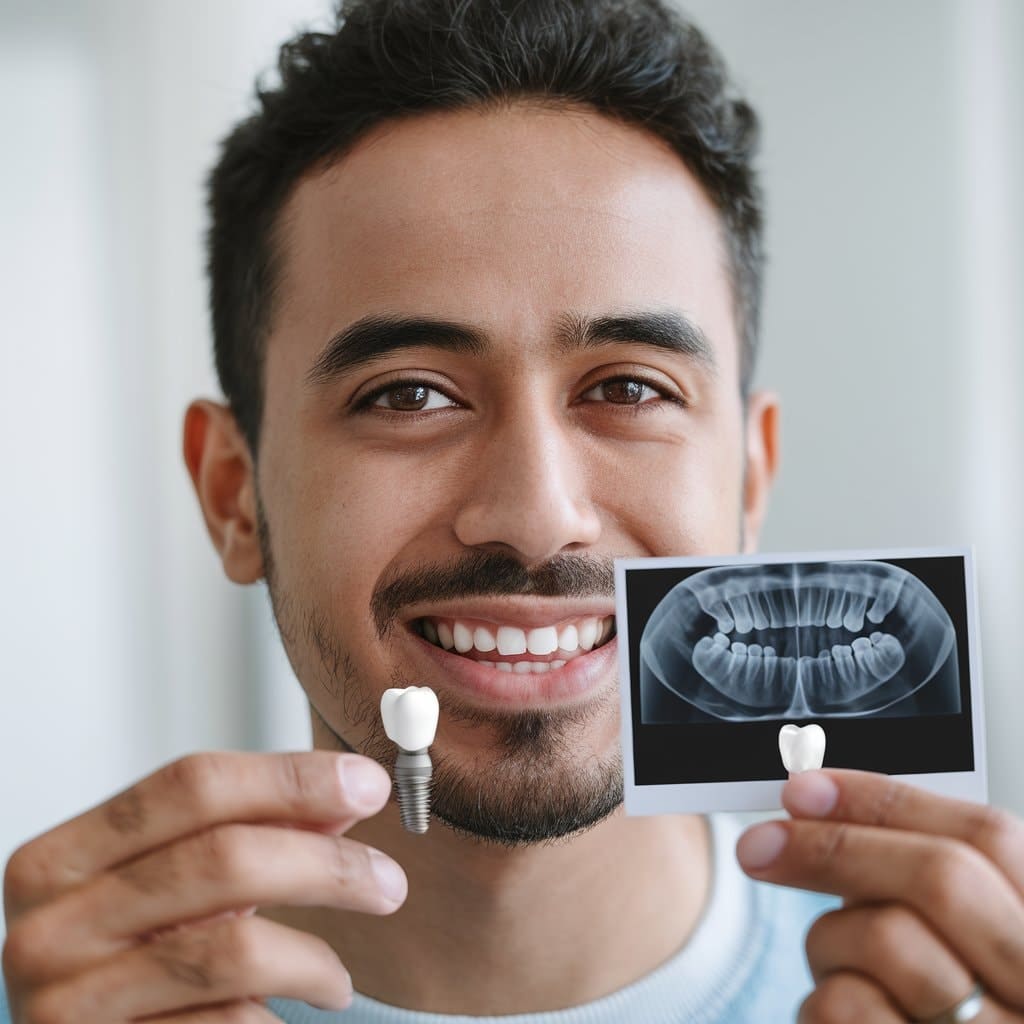Losing a tooth can make anyone feel self-conscious. You might wonder, “what can replace a missing tooth?” This is a common concern for many people. Luckily, modern dentistry offers solutions that look and feel like your natural teeth.
A fact to consider is that not replacing a missing tooth can lead to more oral health issues down the road. This article will explore different options for replacing missing teeth, from dental implants to dentures.
Keep reading to learn which option might work best for you.
Why Is It Important to Replace a Missing Tooth?
Replacing a missing tooth is crucial for maintaining oral health and the alignment of your tooth. A gap can lead to surrounding teeth shifting, which might cause issues with your bite and jaw alignment over time.
This shift could also make it harder to clean your teeth properly, which increases the risk of gum disease and bone loss in the area where the tooth was lost.
A healthy smile isn’t just about aesthetics; it’s about preserving your mouth’s overall function, states Dr. Suresh Mohan Kumar. Options for replacing a missing tooth, including dental implants or bridges, help prevent these problems by providing support for existing teeth and ensuring proper chewing function is restored. They look and feel like natural teeth, blending seamlessly with your overall smile while safeguarding against potential oral health issues down the line.
Impact on Oral Health and Alignment of Your Teeth
A void left by a tooth can precipitate considerable dental health issues over time. Without filling the gap, the nearby teeth might shift into the void. This shift can trigger a misalignment in your bite, complicating your ability to chew properly.
The misalignment also increases the strain on your remaining teeth, potentially leading to decay or even additional tooth loss. The gums where the tooth is located are more susceptible to infection and disease as they’re harder to clean sufficiently without being covered.
Opting for a replacement method, such as dental implants or removable partial dentures, assists in preserving your teeth’s alignment and promotes comprehensive oral health. Dental implants function like genuine roots, stabilizing adjacent teeth and preventing any movements.
Removable partial dentures complete the empty spaces without relying on neighbouring teeth for support, which presents them as an economical alternative for many individuals. Routine visits to a dental clinic become essential after acquiring a tooth replacement to prevent the development of additional dental health problems.

Consequences of Missing Teeth Over Time
The absence of teeth may contribute to various dental health concerns over time. The bone that is used to house the tooth root may begin to weaken, known as bone resorption, without a tooth present.
This may impact your jawbone’s strength and potentially lead to a prematurely aged facial structure. Also, adjacent teeth may be affected; they might move into the gap, disrupting the natural positioning of your teeth and bite.
Such shifts could make chewing or speaking clearly more challenging.
Timely replacement of missing teeth can mitigate these issues. Dental implants serve as substitutes for actual tooth roots, aiding in the maintenance of jawbone health—this provides stability for adjacent teeth and supports your facial structure.
For individuals with several missing teeth consecutively, flexible partial dentures or fixed bridges present solutions that enhance your appearance and restore function simultaneously.
These alternatives enable comfortable chewing and help keep your remaining teeth correctly aligned over time, negating the need for costly interventions in the future.
How Replacement Options Look and Feel Like Natural Teeth
Modern tooth replacement alternatives like dental implants and bridges offer a realistic look and feel, which many patients find identical to their actual teeth. Dental implants, crafted from medical-grade titanium, merge with the jawbone, providing a lasting solution that mirrors the strength and aesthetics of a natural tooth.
This bonding not only forms a sturdy base for the new tooth but also stops bone deterioration, preserving facial structural integrity.
Bridges make use of adjacent teeth to support the positioning of false teeth or crowns in spaces where teeth are absent. They integrate flawlessly with your existing teeth to rejuvenate your smile’s visual appeal.
Both these alternatives enable individuals to eat food and speak as if they were using their original teeth set, substantially boosting life quality without the concern about their looks.
A radiant smile is a powerful advantage; that’s why our replacement alternatives must reproduce the inherent details and functionality of real teeth.
Studying these replacements aids in regaining assurance and oral health after losing one or several teeth. With progress in dental technology, discovering an option that meets your needs flawlessly has become more possible.
Now, let’s discuss why dental implants are a favored choice among both dentists and patients.
What Are the Different Tooth Replacement Options?
Dental implants, removable partial dentures, and full dentures stand as the primary options for replacing missing teeth. Dental implants provide a permanent solution by attaching directly to the jawbone, mimicking a real tooth’s root.
This method supports individual or multiple missing teeth and even a full set if all your teeth are gone. Removable partial dentures offer an affordable option when you need to replace several missing teeth in a row.
They connect to your existing dentures with metal clasps that can be removed for cleaning.
Full dentures replace an entire upper or lower set of teeth. They rest on the gums, where suction keeps them in place. Dentists often recommend them to patients who have lost all their natural teeth due to severe tooth decay or injury.
Each type of tooth replacement aims to restore both function and appearance, allowing individuals to chew food properly and smile confidently again.
What is a Dental Implant, and How Does It Work?
A dental implant acts as a strong foundation for false teeth by replacing the root part of a missing tooth. Surgeons place them directly into your jawbone, where they fuse with your natural bone.
This fusion process makes the implant stable, allowing it to hold a replacement tooth or bridge securely in place. The main parts include the implant itself, a metal post (usually made of titanium), and the crown, which resembles your natural teeth.
Titanium is used because of its unique ability to bond with bone, a process known as osseointegration.
Installing an implant involves several steps that start with preparing the jawbone, if necessary, which might include bone grafting for patients lacking enough bone support. After placing the implant into the jawbone, you must wait for it to integrate with the bone—a process that can take several months.
Once integrated, an abutment is attached permanently on top of the implant to hold new teeth firmly. This method has become highly aesthetic and popular among patients looking to replace missing teeth due to its durability and how closely implants mimic real teeth both in function and appearance.
Next up are removable partial dentures as another option for replacing missing teeth.
How Do Removable Partial Dentures Compare?
Removable partial dentures serve as a less invasive option for replacing multiple missing teeth. Unlike dental implants that require surgery, these false teeth can easily be added to or adjusted according to the patient’s needs over time.
They work by attaching to the existing teeth with clasps, offering a solution that helps maintain tooth alignment and prevent other teeth from shifting. This choice is particularly appealing for those not ready or suited for surgical interventions.
Removable partial dentures offer flexibility in tooth replacement without the need for surgery.
They also stand out as a cost-effective option for patients looking to replace missing teeth while adhering to budget constraints. Caring for removable dentures involves simple daily cleaning and periodic adjustments by dental professionals, making them an accessible choice for many.
While they might not provide the same feel or function as natural teeth or dental implants, their ability to improve one’s smile and chewing capability makes them a valuable option under certain circumstances.
Can a Denture Be Used to Replace Missing Teeth?
Transitioning from removable partial dentures, full dentures present another viable solution for those missing multiple teeth or even all of their teeth. Dentures have been a traditional and popular option for years, offering a way to restore functionality and appearance after tooth loss.
They sit on the gum line, effectively replacing lost teeth and providing support for facial muscles to prevent sagging.
Dentures come in Two main types of dentures: complete dentures for when all natural teeth are missing and partial dentures if you still have some of your teeth. These false teeth can be taken out and put back into the mouth with ease, making them a cost-effective option that also eases cleaning.
For individuals looking to replace lost teeth without undergoing surgery or with concerns about higher-cost options like dental implants, dentures offer a practical alternative that restores the ability to chew food properly and smile confidently again.
Is a dental implant the best solution for replacing missing teeth?
Dental implants offer a permanent solution for replacing a missing tooth or teeth. They act as strong foundations, fixed into the jawbone like natural roots. This feature allows them to support individual crowns, dental bridges, or even full dentures securely.
Unlike removable partial dentures or traditional bridges that may require altering adjacent healthy teeth, dental implants stand on their own without affecting neighbouring teeth.
Considering the cost and longevity of dental implants might lead one to see them as an investment in oral health. Over time, they can be more cost-effective than other options because they are designed to last many years, often with proper care lasting a lifetime.
Patients opting for dental implants enjoy benefits such as improved appearance, speech, and comfort during eating activities due to chewing efficiency similar to that of natural teeth.
Given these advantages, considering personal financial situations and long-term goals for oral health can help determine if a dental implant is the best solution available to replace lost teeth.
Benefits of Dental Implants Over Other Options
Dental implants offer several advantages over other tooth replacement options. They function, feel, and appear as natural as dental implants can be, making them a superior choice for many patients.
Unlike removable partial dentures or bridges that may rely on neighbouring teeth for support, implants stand independently. This independence helps in preserving the health of adjacent teeth and maintains oral hygiene more efficiently.
Implants also boast a high success rate and durability that far surpasses alternatives like dentures or bridges. Patients choosing implants enjoy a more stable solution that allows them to chew food without discomfort or fear of slipping false teeth.
Furthermore, dental implants prevent the jawbone from shrinking due to tooth loss, supporting facial structures better than any other option available to replace missing one or additional teeth can.
Let’s explore next how exactly a dental implant replaces a missing tooth.
How Does a Dental Implant Replace a Missing Tooth?
Transitioning from the advantages, we will now explore how a dental implant substitutes a missing tooth with a synthetic one. A dental implant procedure involves placing a titanium post directly into your upper or lower jawbone.
This post acts as the anchor for the synthetic tooth. Over some time, the titanium post undergoes osseointegration, fusing with the bone and providing support as a natural root would.
After successful integration with your jawbone, an artificial crown that mimics your original teeth is positioned on the implant.
The entire procedure ensures that the newly inserted tooth appears, feels, and functions similarly to a natural tooth. It promotes efficient eating without discomfort and maintains alignment by stopping adjacent teeth from moving into vacant spots.
Dental implants provide a reliable final solution for many wishing to replace missing teeth, as they are self-supported and do not put extra pressure on the surrounding teeth, usually seen with bridges or partial dentures.

Cost Considerations for Dental Implants
Dental implants stand out as an expensive tooth replacement option, yet they offer value that justifies the cost. The price of getting a dental implant can significantly vary depending on the dental practice, the number of teeth missing, and if any additional procedures are required.
Investing in dental implants is not just about replacing a lost tooth; it’s about restoring functionality and confidence.
Understanding these costs upfront helps patients weigh their options more effectively when considering how best to replace lost teeth or make adjustments for better oral health. Dental practices often offer payment plans or financing options, making this crucial investment more accessible for those who see it as their final decision on achieving optimal oral health and appearance.
Checking with your insurance may also reveal some coverage for this most cost-effective option over time due to its durability and low maintenance compared with alternatives like dentures or bridges.
How Do Removable Partial Dentures Work as a Tooth Replacement Option?
Removable partial dentures serve as a cost-effective option for replacing missing teeth. They use your existing teeth to support the placement of false teeth. These dentures are custom-made to fit your mouth, ensuring they blend in with your neighbouring teeth for a natural look.
Metal clasps or other retainers may hold them in place, making them easy to remove and clean.
This tooth replacement method can replace a single missing tooth or multiple teeth, depending on your needs. The flexibility of adding additional teeth to the denture later is an advantage if you lose more teeth over time.
Caring for removable dentures involves regular check-ups and cleaning to maintain oral health and ensure the longevity of the appliance.
Pros and Cons of Removable Partial Dentures
Exploring tooth replacement options can lead you to consider removable partial dentures. They stand as a cost-effective choice for those missing a tooth or looking to replace multiple teeth without needing support from neighbouring teeth.
- Removable partial dentures offer an affordable solution when comparing expensive tooth replacement options.
- They can be designed to replace multiple teeth, making them versatile for various dental needs.
- False teeth in these dentures are held securely, allowing individuals to chew food more effectively than with missing teeth.
- Additional teeth can be added to the structure if future tooth loss occurs, offering flexibility over time.
- Caring for removable dentures is straightforward, involving regular cleaning similar to natural teeth.
- For many, wearing dentures improves confidence by restoring a full smile without gaps from missing teeth.
However, there are some considerations:
- Dentures may feel unnatural and take time to get used to in the mouth.
- They require removal for cleaning and during sleep, which some may find inconvenient.
- Over time, fit adjustments might be needed as the mouth’s shape changes due to factors like ageing or weight loss.
- Wearing dentures can lead to sore spots or discomfort if not fitted properly initially or after adjustments are made.
Removable partial dentures present a balanced option between cost and convenience. They successfully fill gaps in your smile while also being mindful of budget constraints.
How to Care for Removable Dentures
After discussing the pros and cons of removable partial dentures, it’s crucial to understand how to maintain them properly. Taking care of your dentures ensures they last longer and remain comfortable to wear.
- Rinse your removable dentures after eating to remove food particles. Hold them carefully to avoid bending or damaging the material.
- Clean your dentures daily using a soft-bristled brush and a non-abrasive cleaner. This prevents plaque buildup and stains.
- Soak your dentures overnight in water or a mild denture-soaking solution. This helps maintain their shape.
- Before putting your dentures back in your mouth, rinse them thoroughly, especially if you use a soaking solution.
- Keep regular check-ups with your dentist to maintain the proper fit and condition of your dentures; your dentist can identify any potential issues early.
- Avoid using hot water to clean or soak your dentures, as it can warp them.
- Care for your gums by brushing them gently every day with a soft brush before inserting your dentures.
- Do not attempt to adjust or repair broken dentures yourself; visit your dentist for professional help.
- Ensure you are using the correct cleaning products recommended by dental professionals to avoid damaging the materials of the denture.
- Store your removable partial dentures in a safe place when not wearing them to prevent loss or accidental damage.
These steps help promote oral health while getting the most out of this cost-effective option for replacing missing teeth.
Can They Replace Multiple Teeth?
Caring for removable dentures is just one part of addressing tooth loss. For people needing to replace multiple teeth, these dentures offer a cost-effective solution. Removable partial dentures can fill the gaps left by missing teeth on either side of the mouth.
They use a metal framework that attaches to your existing teeth for support. This setup helps in chewing food and maintains the alignment of neighbouring teeth.
For individuals with several missing teeth, especially those in the middle of their dental arch, two implants may serve as anchors for false teeth. These false teeth are held securely in place, not dependent on any surrounding healthy teeth for support.
This method allows patients to enjoy a stable and functional set of replacement teeth without affecting other oral structures.
What Are the Common Methods of Tooth Replacement?
Dental implants, dentures, and dental crowns are typical methods for tooth replacement. Dental implants present a resilient and enduring choice to replace a lost tooth by securing an artificial one directly into the jawbone.
They regularly produce the ideal results for people wanting to restore the functionality and aesthetic of their smiles. Conversely, dentures offer an affordable solution for replacing numerous teeth or even all teeth in one’s mouth.
They can be readily detached for cleaning and are fabricated to emulate the appearance of natural teeth.
Dental crowns utilize your existing teeth for support, positioning them over damaged or decayed teeth near the missing space. This way, it serves to replace and fortify the healthy tooth structure that remains.
Each replacement approach has its advantages designed for different needs whether you need to replace a singular tooth or multiple ones. Examining these alternatives can assist in deciding which might provide superior chewing ability and advance your general oral health.

Understanding Dental Crowns as a Replacement Option
Dental crowns stand out as a strong option to replace a single tooth. They work by covering the entire surface of your existing tooth, providing strength and improving its appearance.
Crowns use your existing teeth as their foundation, making them a cost-effective choice for individuals looking to replace a lost tooth or make adjustments to the shape of their smile.
This method does not rely on any surrounding teeth, which preserves the integrity of your dental structure.
Crowns come in various materials, such as porcelain, ceramic, and metal, allowing patients to choose based on durability needs and aesthetic preferences. Porcelain crowns closely mimic natural teeth colour, blending seamlessly with your smile.
The process involves placing the crown on the teeth next to the missing spot after preparing them properly. It’s an ideal option for supporting weak teeth or covering cosmetic flaws while also being highly durable for chewing food efficiently.
How to Replace a Single Tooth Effectively
Losing a tooth affects your smile and how you chew your food. Luckily, dental patients have several options available to replace a missing tooth effectively.
- Consider a dental implant as the most cost-effective option over time. A titanium post gets placed into the jawbone, acting as the root for a new artificial tooth.
- Look into a removable partial denture if you need an easier, less permanent solution. This appliance uses your existing teeth for support and can be taken out for cleaning.
- Think about a dental bridge if you want to fill the gap without surgery. The bridge uses surrounding teeth for support and places an artificial tooth in the missing spot.
- Regular check-ups are crucial no matter which option you choose. Dentists strongly urge patients to maintain their dental health to ensure the longevity of their tooth replacement.
- Understand that each option has different costs involved. Dental implants might have a higher initial cost, but they give the best results in terms of appearance and function.
- Know that replacing multiple teeth may require combining different methods. Sometimes, dentists use implants to anchor bridges or partial dentures for more stability.
- Carefully follow aftercare instructions provided by your dentist. Proper care extends the life of your replacement tooth and keeps oral health issues at bay.
- Explore temporary options if you still need to get ready for a permanent solution. Temporary bridges or flipper teeth can help improve your smile immediately while you decide on long-term treatment.
- Ask about how each option will affect opposing teeth during regular check-ups. Over time, untreated gaps may cause other teeth to shift or over-erupt.
Choosing the right method involves consulting with qualified professionals who understand your specific needs and circumstances.
When to Consider a Denture for Missing Teeth
Individuals with a few missing teeth should think about getting dentures. This option works well when you need to replace several teeth but don’t want something permanent like implants.
Dentures can also support the cheeks and lips, keeping your face from sagging over time. They serve as a cost-effective option for improving your smile and ability to chew.
Choosing dentures becomes necessary if you have lost most of your teeth and the remaining ones cannot support bridges or are too weak for dental implants. Regular check-ups will help ensure that your denture fits well and remains comfortable over time.
For those considering an affordable solution to missing teeth, especially when multiple replacements are needed, dentures offer a practical choice without depending on surrounding healthy teeth for support.
Conclusion
Choosing the right tooth replacement option is critical for your oral health and overall well-being. Dental implants emerge as a leading choice due to their durability and the way they mimic natural teeth, offering a foundation for bridges, crowns, and dentures.
They stand out as a final option that does not depend on surrounding teeth for support. On the other hand, removable partial dentures provide a cost-effective alternative when you need to replace a single tooth or multiple teeth in the middle of your mouth without undergoing surgery.
Each tooth replacement method has its advantages, catering to different needs and budgets. Regular check-ups ensure these solutions maintain their fit and function over time. Regardless of your choice—be it dental implants or dentures—investing in replacing missing teeth safeguards your smile’s alignment and health long-term.


